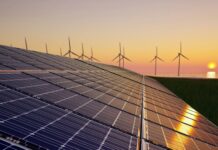Report shows Greenhouse gas emissions reach record high in 2020
Greenhouse gas concentrations hit a record high in 2020 shows a new report by the UN weather agency, jeopardising Paris Agreement temperature targets.
The World Meteorological Organization Greenhouse Gas Bulletin, which comes days before the start of the COP26 climate conference, showed that the abundance of heat-trapping gases in the atmosphere had increased at a faster rate than the annual average for the last decade despite a temporary reduction during pandemic-related lockdowns.
The concentration of carbon dioxide (CO2), the most important greenhouse gas, reached 413.2 parts per million in 2020 – 149% of the pre-industrial level. The Bulletin flagged concern that the ability of land ecosystems and oceans to act as “sinks” may become less effective in future, thus reducing their ability to absorb carbon dioxide and act as a buffer against larger temperature increase.
The Greenhouse Gas Bulletin contains a stark, scientific message
The Bulletin also showed that from 1990 to 2020, radiative forcing – the warming effect on our climate – by long-lived greenhouse gases increased by 47%, with CO2 accounting for about 80% of this increase.
WMO Secretary-General Professor Petteri Taalas commented: “The Greenhouse Gas Bulletin contains a stark, scientific message for climate change negotiators at COP26. At the current rate of increase in greenhouse gas concentrations, we will see a temperature increase by the end of this century far in excess of the Paris Agreement targets of 1.5 to 2 degrees Celsius above pre-industrial levels. We are way off track. It has major negative repercussions for our daily lives and well-being, for the state of our planet and for the future of our children and grandchildren.
“Many countries are now setting carbon neutral targets and it is hoped that COP26 will see a dramatic increase in commitments. We need to transform our commitment into action that will have an impact of the gases that drive climate change. We need to revisit our industrial, energy and transport systems and whole way of life. The needed changes are economically affordable and technically possible. There is no time to lose.”














